So you have bought loads of new plants, brought them home, and planted them all nicely while gazing at your work, you see a Ramshorn snail munching away at a old leaf; do ramshorn snails really eat plants?
No, red ramshorn snails do not primarily eat healthy plants. They usually consume dead or decaying plant matter. However, some exceptions and differing opinions exist, and they might nibble on certain plants.
I remember the first time I introduced red ramshorn snails into my aquarium. The excitement was palpable, but so was the fear. Would they become a menace to my carefully curated plant life? Over the years, I’ve learned that these snails are mostly plant-safe.
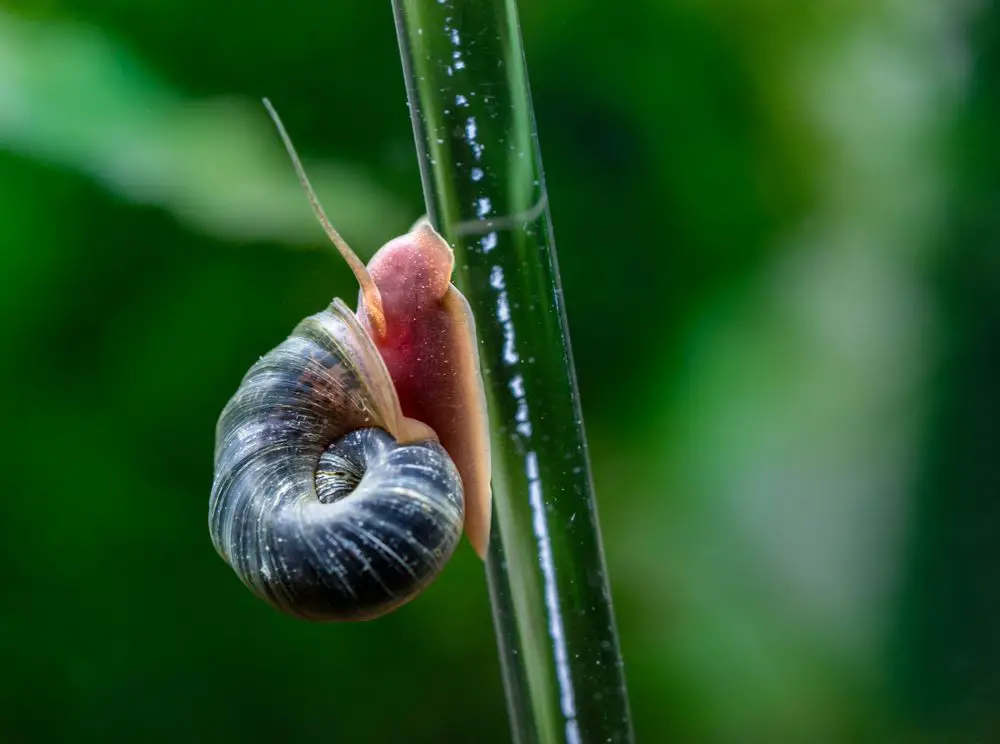
I’ve seen them take over a tank when left unchecked, and I’ve even noticed them nibbling on specific plants. But with careful observation and management, I’ve found a balance that allows both my plants and snails to thrive.
In this article, we’ll explore the nuances of ramshorn snails and their relationship with plants. We’ll delve into their eating habits, the opinions of different aquarists, and how to manage them effectively in your tank.
So grab your favorite shrimp net and dive into the details!

What do Ramshorn snails primarily eat?
Red ramshorn snails are intriguing creatures with a diet primarily consisting of dead or decaying organic matter. Unlike some other snails that might actively munch on healthy plants, red ramshorn snails are more scavengers than herbivores.
In aquariums, they often feed on leftover fish food , algae, and dead or dying plant matter. This behavior makes them valuable members of the clean-up crew in many tanks. They help break down organic waste, turning it into a form that beneficial bacteria and plants can utilize.
, algae, and dead or dying plant matter. This behavior makes them valuable members of the clean-up crew in many tanks. They help break down organic waste, turning it into a form that beneficial bacteria and plants can utilize.
However, it’s essential to note that red ramshorn snails might occasionally nibble on certain live plants. Some aquarists have reported them eating specific types of moss or soft-leaved plants. This behavior is usually not a significant concern, as they tend to prefer decaying parts over healthy ones, and the plants often grow faster than the snails can consume them.
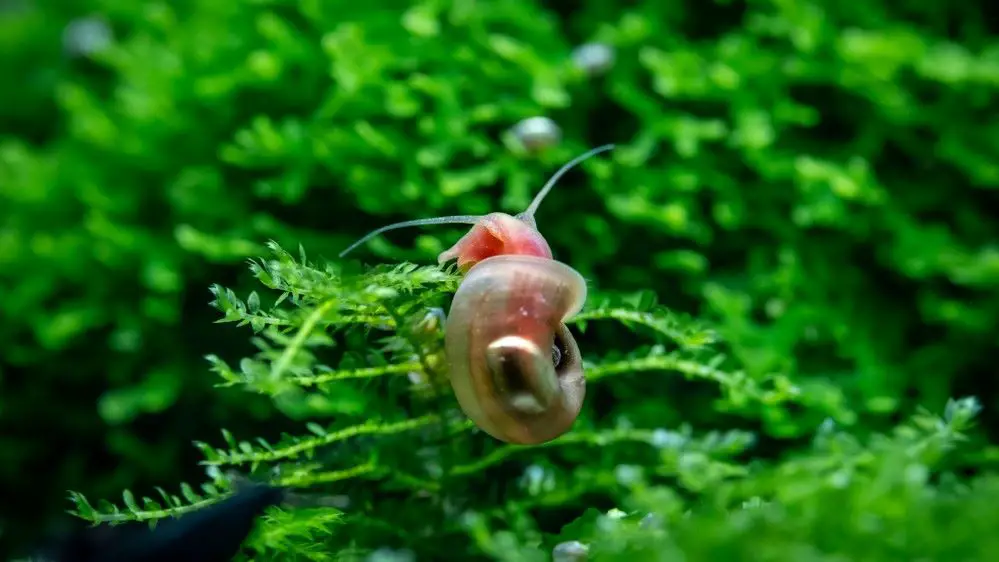
The dietary habits of red ramshorn snails can be influenced by the availability of food sources in the tank. They might turn to live plants more frequently if there’s a lack of dead or decaying matter. Therefore, understanding their primary diet and providing appropriate food can help maintain a balance in the tank, ensuring that both the snails and the plants thrive.
Red ramshorn snails primarily eat dead or decaying matter, playing a vital role in the ecosystem of an aquarium. Their occasional nibbling on live plants is usually not a cause for concern, but understanding and managing their diet can lead to a harmonious coexistence with the plant life in your tank.
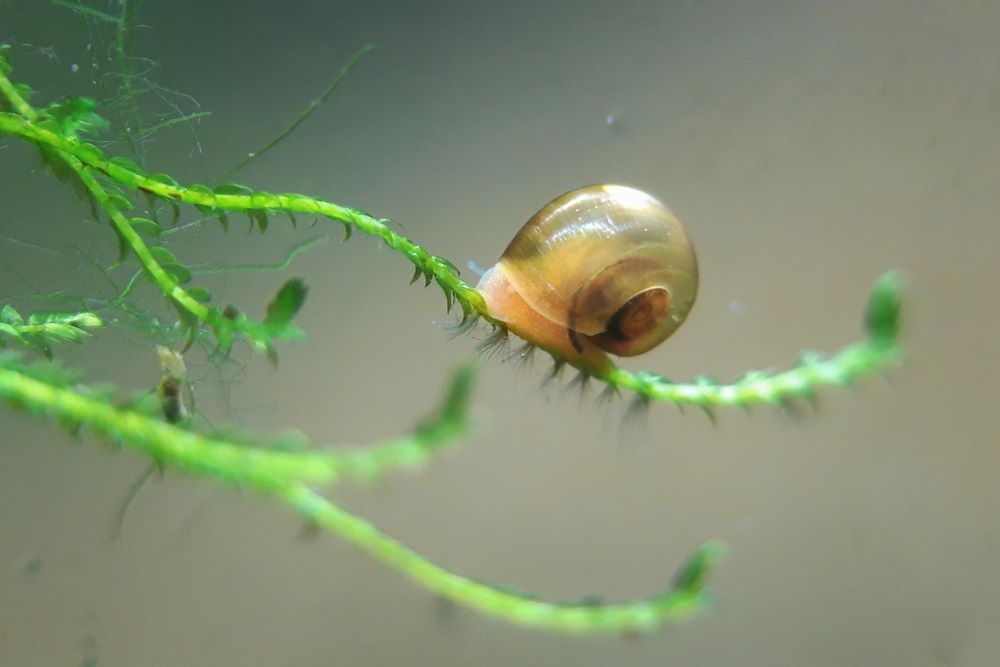
How can you control Ramshorn snails’ population in your tank?
Controlling the population of red ramshorn snails in an aquarium is a common concern for many aquarists. These snails are known for their rapid reproduction, and without proper management, they can quickly overrun a tank. However, with careful observation and strategic actions, you can maintain a healthy balance.
First and foremost, understanding the factors that contribute to their population growth is essential. Red ramshorn snails thrive in environments with abundant food sources, such as leftover fish food, algae, and decaying plant matter. By controlling these factors, you can significantly influence their population.
Regular maintenance and cleaning of the tank can help in this regard. Removing uneaten food and dead plants promptly will limit the available food for the snails, slowing down their reproduction. Feeding fish in appropriate quantities to minimize leftovers is another effective strategy.
Introducing natural predators can also be a way to keep the snail population in check. Certain fish species, such as loaches, are known to feed on snails. However, this approach requires careful consideration of the compatibility of the fish with other tank inhabitants, like shrimp.

Another method is manual removal. Regularly inspecting the tank and removing excess snails by hand can be a time-consuming but effective way to control their numbers. Some aquarists even use snail traps to make this process more manageable.
Understanding the breeding habits of red ramshorn snails can provide insights into controlling their population. They lay eggs in small, gel-like sacs, often on the underside of leaves or other surfaces. Monitoring and removing these egg sacs can prevent new generations from hatching.
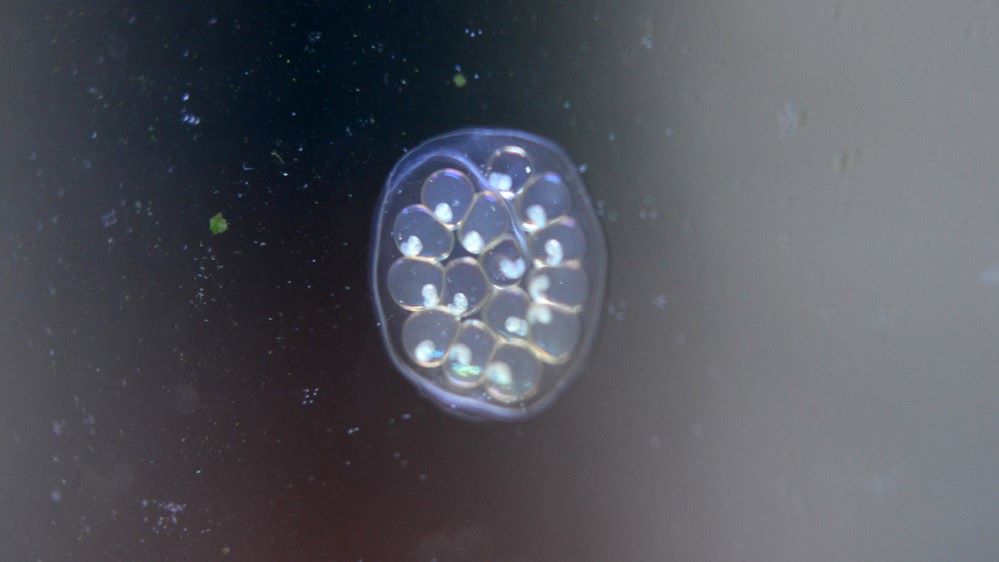
Controlling the population of red ramshorn snails in your tank is a multifaceted task that requires a combination of observation, maintenance, and strategic actions. By understanding their dietary and breeding habits and taking appropriate measures, you can maintain a healthy balance that benefits both the snails and the overall ecosystem of your aquarium.
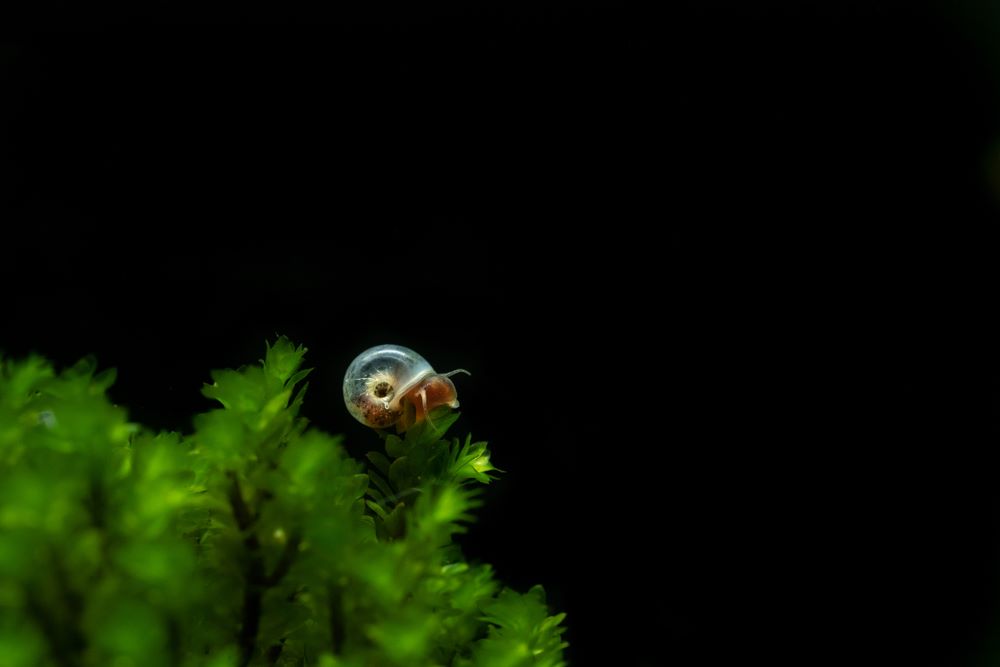
Carrots: An Excellent Food and Bait for Ramshorn Snails
Carrots are not just a nutritious snack for humans; they have also found a special place in the world of Ramshorn snails. These vibrant orange vegetables are an excellent food source for Ramshorn snails, providing them with essential nutrients and a delightful treat.
But the relationship between carrots and Ramshorn snails goes beyond mere nourishment. Carrots can also be used as an effective bait to attract these snails. Whether you’re looking to observe them more closely or control their population, this simple method can be quite handy.
All you need to do is tie a fishing line around a piece of carrot and leave it in the tank for a few hours. When you come back, you’ll likely find Ramshorn snails all over it. The texture and taste of the carrot seem to be particularly appealing to them, making it an excellent choice for bait.
This technique can be used for various purposes, from population control to simply enjoying the fascinating behavior of these snails as they gather around their favorite snack.
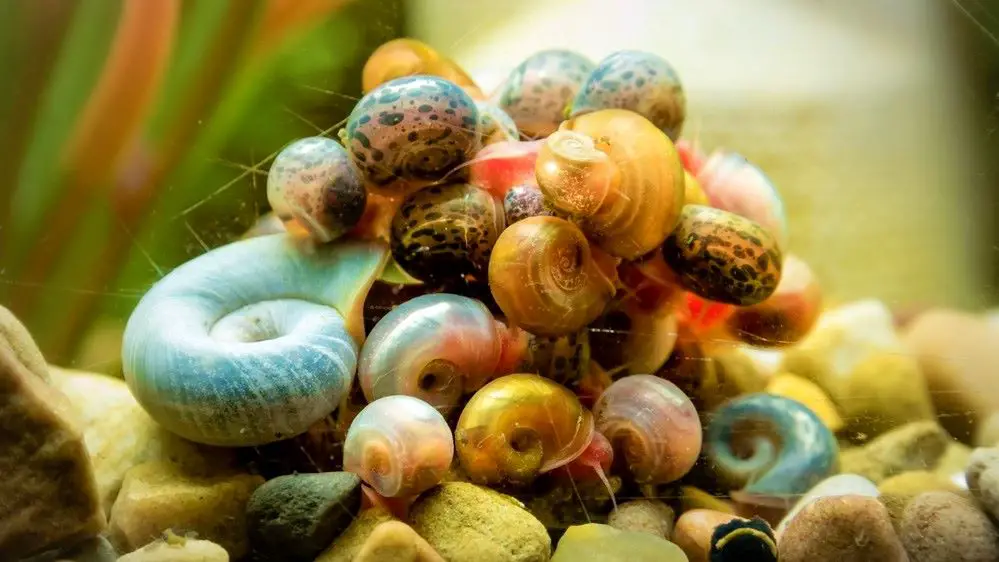
Conclusion: Red Ramshorn Snails and Their Role in Your Aquarium
Red ramshorn snails are fascinating and valuable members of the aquarium community. Their primary diet of dead or decaying matter helps maintain a clean and balanced ecosystem, while their occasional nibbling on live plants is usually not a cause for concern.
Controlling their population requires a combination of observation, maintenance, and strategic actions, ensuring a harmonious coexistence with other tank inhabitants.
If you ever struggle with red ramshorn snails or have any questions about their care, please don’t hesitate to reach out. If you can’t connect with me here, check out Aquarium Shrimp Keeping on Facebook, where a community of fellow enthusiasts is always ready to help.
Happy Snail Keeping, shrimpfam!
May your aquarium thrive with the delightful dance of snails and plants.
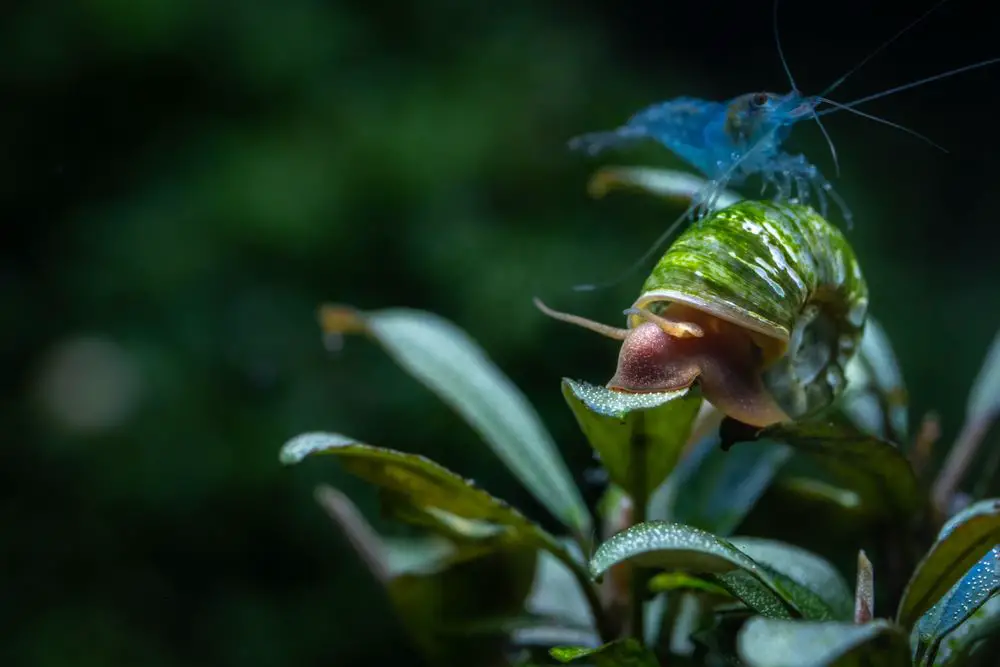
FAQ Section
Q. Are Ramshorn snails good or bad?
A. Ramshorn snails can be both good and bad, depending on the context. They are beneficial in that they help clean the tank by consuming dead or decaying matter. However, if their population is not controlled, they can become a nuisance.
Q. Are there any aquarium snails that don’t eat plants?
A. Yes, many aquarium snails primarily feed on algae and dead or decaying matter rather than live plants. Nerite snails and Mystery snails are popular examples that are generally considered plant-safe.
Q. Will snails eat my plants?
A. Most aquarium snails prefer algae and dead or decaying plant matter. While some might nibble on soft or weakened plants, healthy and robust plants are usually safe. Observing the specific behavior of the snails in your tank will give you the best insight.
Q. Should I get rid of Ramshorn snails?
A. Whether or not to get rid of Ramshorn snails depends on your specific situation. If they are contributing positively to the tank’s ecosystem and their population is under control, they can be a valuable addition. If they are overpopulating or causing other issues, you may consider reducing their numbers or removing them entirely.
